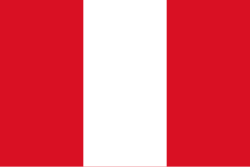Contents
- Scientists
- Social scientists
- Physicians
- Writers
- Artists
- Public service
- Military
- Politics
- Revolutionaries
- Terrorists
- Ancient civilizations
- Hurin dynasty
- Hanan dynasty
- Vilcabamba (Colonial Era)
- Athletes
- Boxers
- Chess players
- Association football players
- Surfers
- Tennis players
- Volleyball players
- Other
- Beauty queens and models
- Religion
- Other 2
- References
This is a list of notable Peruvians .

